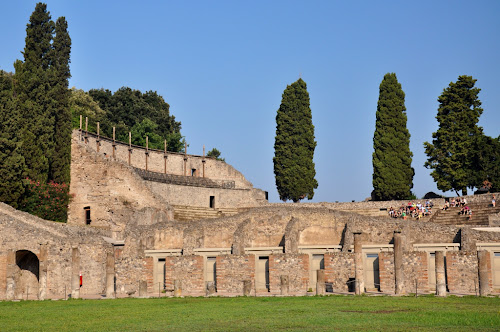Sep 07
Pompei was fascinating. The ruins cover approx 65 acres, only 20 of which are excavated. The roads are the original stones - very rough.
The carts and chariots left deep track marks in the stones, visible in the pics below. The large stones were placed so people didn't have to step down into the street where waste would flow freely. They were working on a sewage system but hadn't got it done before the eruption.
Horses were left outside the city gates (below); donkeys were used to pull carts or chariots along the narrow city streets.
Typical city street. As roofs were often made of wood, they were not preserved.
Danny was absolutely awed that we actually saw the actual home of Casca Longus - the first person to stab Caesar.
Brick and stonework were covered with marble, mosaics or plaster which was painted in vibrant colour.
Only 2 plaster casts of victims of the eruption were on-site. The originals are all kept in museums.
A cooking building (individual residences did not have kitchens). Marble countertops could have been set like mosaics as shown below or as larger slabs.
Odd that the "House of Pleasure" was one of the best preserved - frescoes (depicting services available) were very clear.
Tiny rooms - the rock beds weren't much longer than 5 feet.
Hazy day, couldn't get a very clear shot of Mount Vesuvius.
At 30 degrees, very warm today walking among the ruins with little breeze. Glad we only booked a half day tour.

















No comments:
Post a Comment